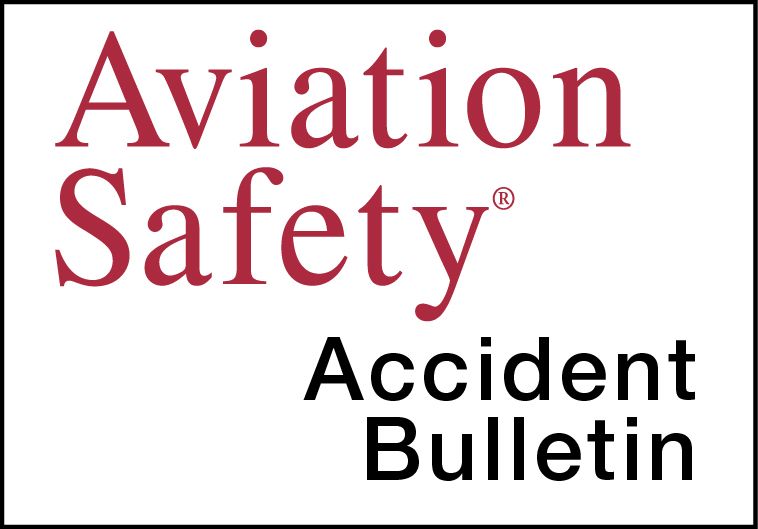AVweb’s General Aviation Accident Bulletin is taken from the pages of our sister publication, Aviation Safety magazine. All the reports listed here are preliminary and include only initial factual findings about crashes. You can learn more about the final probable cause on the NTSB’s website at www.ntsb.gov. Final reports appear about a year after the accident, although some take longer. Find out more about Aviation Safety at www.aviationsafetymagazine.com.
July 2, 2022, Oklahoma City, Okla.
Piper PA-28-140 Cherokee 140
At about 0829 Central time, the airplane sustained substantial damage when it failed to gain altitude after takeoff and apparently stalled before contacting terrain. The pilot sustained serious injuries; the passenger was fatally injured. Visual conditions prevailed.
The pilot reported the airplane did not perform as it normally would. As it climbed above nearby houses, airspeed and altitude began to decrease. He began a right turn, lowering the nose to remain under transmission lines, but the airplane seemed to “fall out of the sky.” It impacted the ground and slid to a stop, damaging both wings and the fuselage. Witnesses observed the airplane flying low, not climbing and in a right turn before it impacted the ground.
July 2, 2022, St. Jacob, Ill.
Piper PA-24-250 Comanche 250
The airplane was substantially damaged at 1135 Central time when it contacted terrain shortly after takeoff, following an apparent engine failure. The airline transport pilot received serious injuries, and a private pilot was fatally injured. Visual conditions prevailed.
A witness observed the airplane make several takeoff and landings. He heard the airplane taking off again and said the “engine started to sputter right after it lost power, in and out couple of times.” The right wing then dropped down, and the airplane started to rotate clockwise as viewed from above. The airplane impacted terrain near the departure end of the runway.
July 3, 2022, Aurora, Colo.
Van’s RV-6 Experimental
At about 0735 Mountain time, the airplane sustained substantial damage when the engine lost power shortly after takeoff and it came to rest in a nearby field. The pilot was not injured while the passenger sustained minor injuries.
The airplane reportedly had 35 gallons of fuel aboard for the planned cross-country flight. Shortly after takeoff from Runway 26, the pilot began a left turn when the engine lost power. After informing ATC of the problem, he was cleared to land on Runway 8, but he determined the airplane could not reach it. Instead, the pilot landed straight ahead in a flat cornfield.
July 3, 2022, Boulder City, Nev.
Extra EA-300/L
The airplane was destroyed at about 0849 Pacific time when it reportedly stalled and spun while maneuvering. The solo pilot was fatally injured.
Retrieved ADS-B data show the accident airplane taking off at about 0844 and climbing on an east-southeast track to about 4150 feet MSL. Four minutes later, the airplane was in a descent and accelerating. It subsequently impacted desert terrain with an elevation of about 2050 feet MSL. A witness reported the pilot planned to overfly their location. The airplane flew over the area at a low altitude and then climbed, turned back and made a second pass. After a climbing turn, the airplane nosed over, appeared to enter a spin and spiraled to the ground.
July 3, 2022, Findlay, Ohio
Cub Crafters CC11-160
At about 0930 Eastern time, the airplane was substantially damaged during an aborted takeoff. The solo commercial pilot was not injured. The airplane had been involved in an accident in 2020. The pilot subsequently purchased the airplane and made extensive repairs. The accident flight was the first since the repairs were completed.
The pilot performed a run-up without issue and operated the electric pitch trim to a full nose-up position as indicated on the primary flight display (PFD), and then repositioned it to the takeoff position and began the takeoff roll. At liftoff, control pressures felt “really heavy” and he aborted the takeoff. The airplane subsequently nosed over “slowly.” Examination revealed both the pitch trim control surface and the PFD indication were consistent with a full nose-down setting.
This article originally appeared in the October 2022 issue of Aviation Safety magazine.
For more great content like this, subscribe to Aviation Safety!




































Tough loss. Glad there were no serious injuries.
God bless.